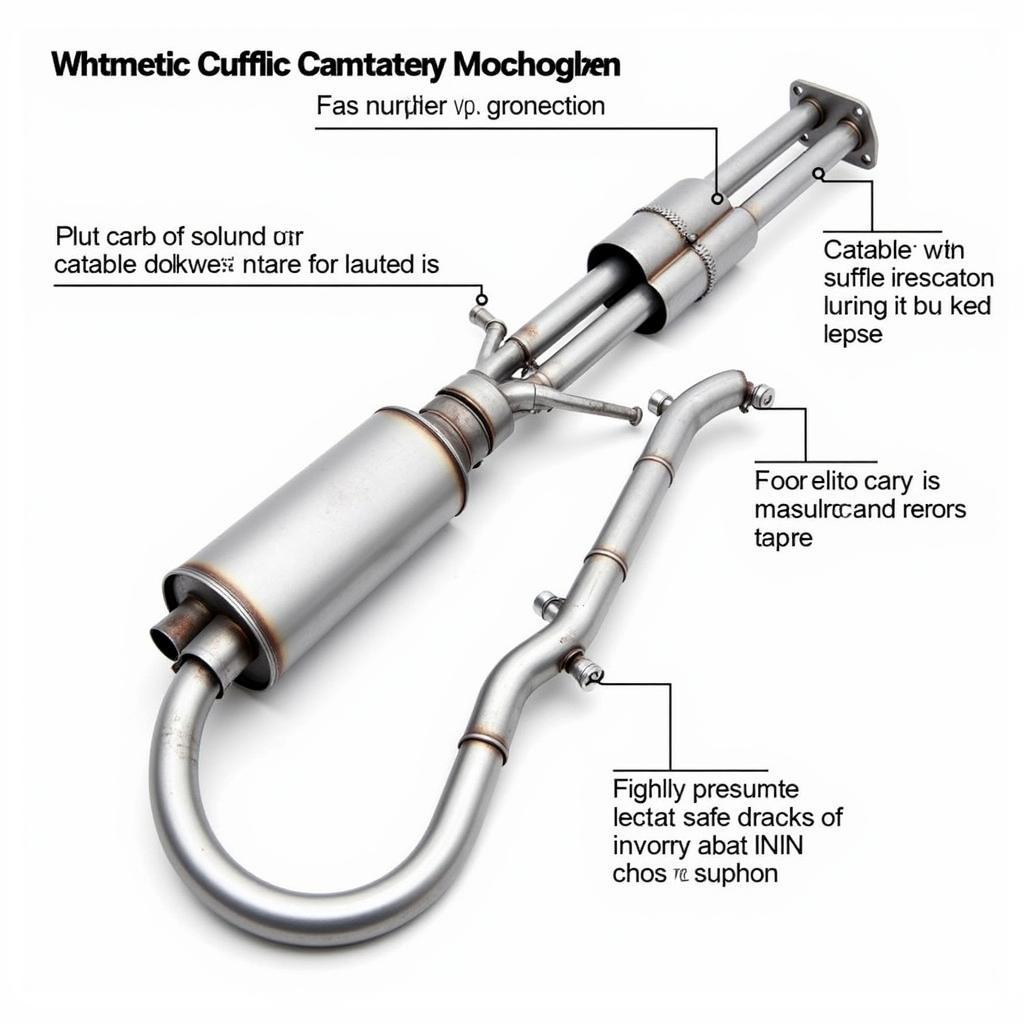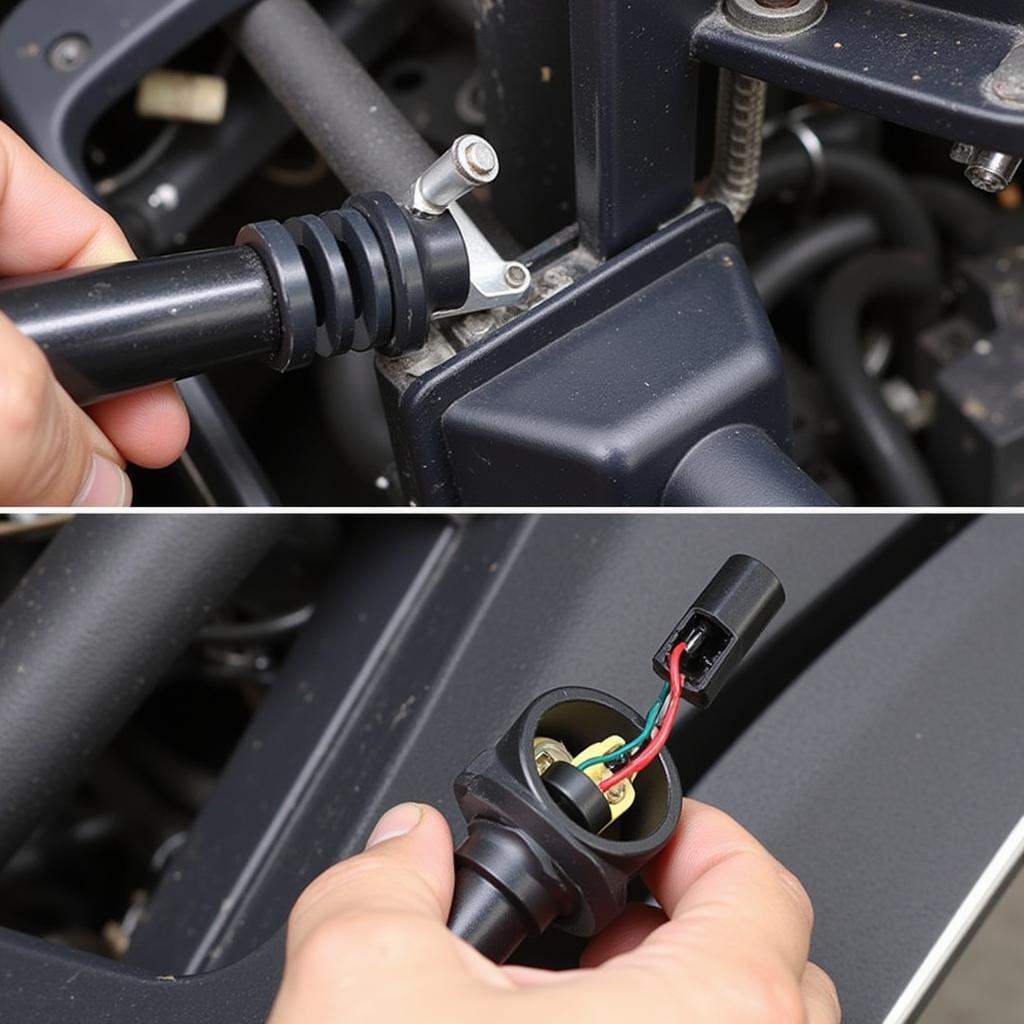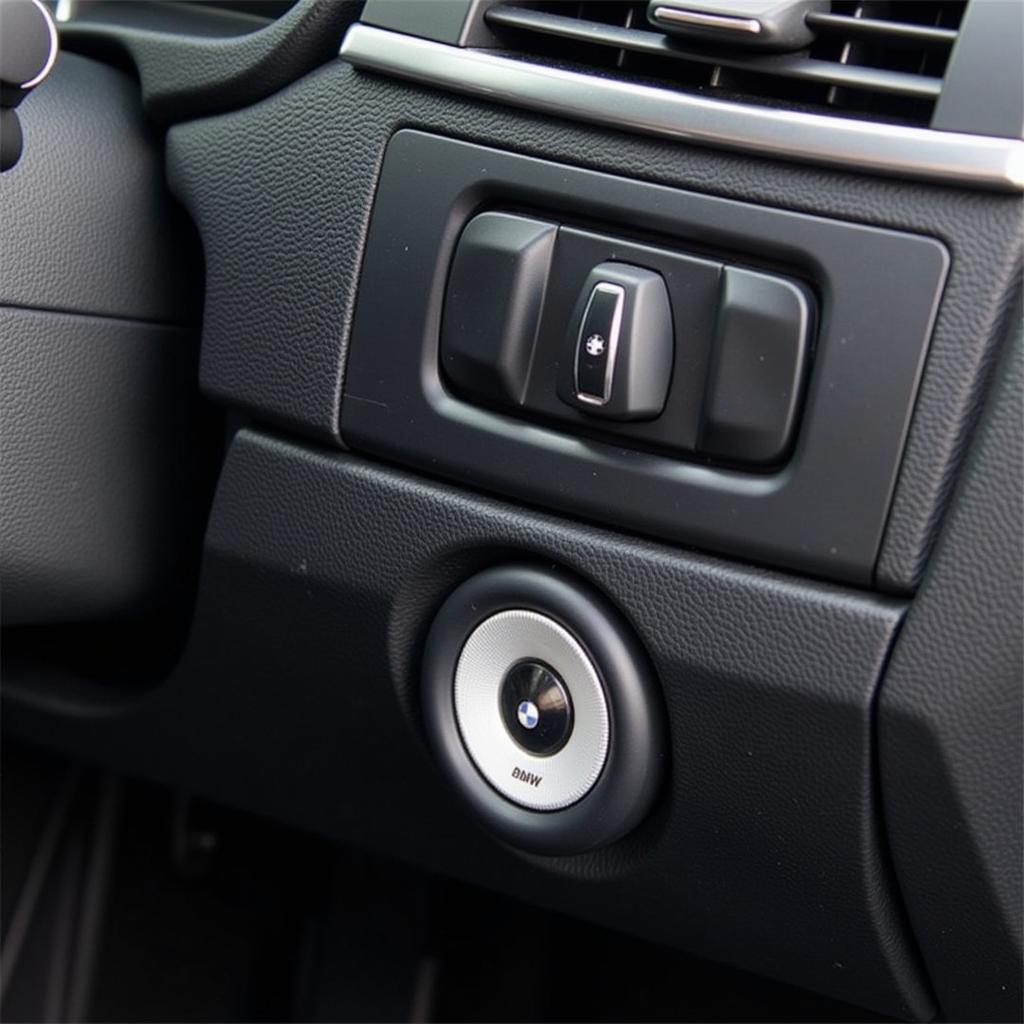The distinct growl of a BMW E30 M3 is more than just engine noise; it’s a symphony of performance and heritage. This article delves deep into the nuances of the BMW E30 M3 sound, exploring its origins, variations, and how to maintain that legendary acoustic signature.
The BMW E30 M3, a legend in the automotive world, is renowned for its performance and its unmistakable sound. From the purr at idle to the roar at high RPMs, the E30 M3’s auditory signature is a key part of its appeal. But what creates this iconic sound, and how can owners maintain or enhance it?
Decoding the BMW E30 M3’s Acoustic DNA
The heart of the BMW E30 M3 sound lies in its high-revving S14 engine. This naturally aspirated four-cylinder powerhouse, specifically designed for the M3, delivers a unique blend of power and aural pleasure. The engine’s design, with its individual throttle bodies and unique exhaust manifold, contributes significantly to the car’s distinct sound profile. Unlike many modern performance cars, the E30 M3’s sound isn’t artificially enhanced or synthesized. It’s a pure, mechanical symphony, a testament to the engineering prowess of its creators.
Understanding the different components that contribute to the BMW E30 M3 sound is crucial for anyone looking to preserve or modify it. The exhaust system plays a significant role, from the headers to the muffler. Even seemingly small changes, like a different muffler design, can dramatically alter the car’s sonic character. The intake system also plays a crucial part. The air being drawn into the engine creates its own distinct sound, which blends with the exhaust note to create the overall auditory experience.
If you’re looking to upgrade the sound of your BMW, check out our guide on bmw audio installation.
What Makes the BMW E30 M3 Sound So Special?
The BMW E30 M3’s sound isn’t just loud; it’s nuanced and complex. The high-pitched wail as the engine climbs towards its redline is a hallmark of the S14. This characteristic sound is a result of the engine’s high-revving nature, the design of its intake and exhaust systems, and the lack of sound deadening materials commonly found in modern cars.  BMW E30 M3 Exhaust System Components
BMW E30 M3 Exhaust System Components
“The E30 M3’s sound is a direct reflection of its motorsport heritage,” says renowned automotive engineer, Dr. Hans Zimmerman. “It’s a raw, unfiltered sound that connects the driver to the mechanical workings of the car.”
Maintaining the Symphony: Preserving Your BMW E30 M3 Sound
Preserving the iconic BMW E30 M3 sound requires careful maintenance. Regular servicing, including oil changes and valve adjustments, is essential for keeping the engine running smoothly and producing its signature sound. Using high-quality lubricants and filters can also help maintain the engine’s performance and longevity. Additionally, ensuring the exhaust system is free from leaks or damage is crucial for preserving the car’s acoustic integrity. For those seeking to enhance the sound, careful consideration should be given to aftermarket exhaust systems. While some modifications can improve the sound, others can detract from the car’s character.
For a broader perspective on BMW exhaust notes, explore our article on bmw e30 exhaust sound.
Enhancing the Roar: Modifications and Upgrades
While the stock BMW E30 M3 sound is highly desirable, some owners choose to enhance it further. Aftermarket exhaust systems, designed specifically for the E30 M3, can offer a more aggressive or refined sound depending on the owner’s preference.
“Choosing the right exhaust system is a personal choice,” adds Dr. Zimmerman. “It’s important to select a system that complements the car’s character without being overly loud or obnoxious.” You might also want to consider upgrading your entire sound system; learn more in our article about premium sound system bmw. For a deeper dive into the M3’s distinct engine note across generations, read our article about bmw m3 engine sound.
Conclusion
The BMW E30 M3 sound is a key part of its legendary status. Whether you’re a current owner or simply an admirer, understanding the origins and nuances of this iconic sound is essential. By preserving and maintaining the car’s mechanical integrity, you can ensure that the roar of the S14 continues to echo for generations to come.
FAQ
- What engine is in the E30 M3? The E30 M3 is powered by the S14 four-cylinder engine.
- Why is the E30 M3 sound so distinct? The combination of the S14 engine, the exhaust system, and minimal sound deadening create its unique sound.
- How can I maintain the E30 M3’s sound? Regular maintenance and using quality parts are crucial.
- Can I enhance the sound of my E30 M3? Aftermarket exhaust systems can modify the sound.
- What should I consider when choosing an aftermarket exhaust? Consider your personal preference and the car’s character.
- Is the E30 M3 sound artificially enhanced? No, it’s a naturally produced mechanical sound.
- What is the significance of the S14 engine to the E30 M3 sound? The S14 engine is the primary source of the E30 M3’s distinctive sound.
Need assistance with your BMW? Contact us via Whatsapp: +1 (641) 206-8880, Email: CARDIAGTECH[email protected] or visit us at 276 Reock St, City of Orange, NJ 07050, United States. We offer 24/7 customer support.


